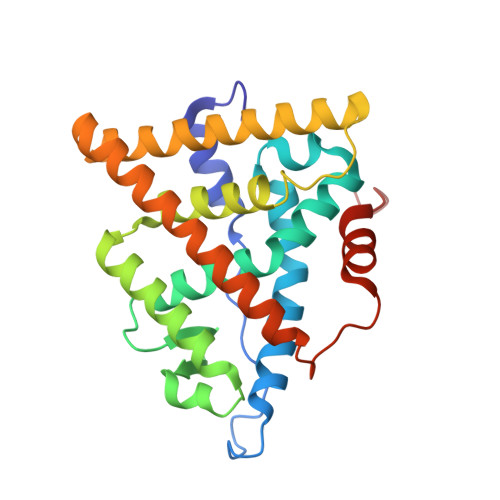Estrogen receptor ligands. Part 10: Chromanes: old scaffolds for new SERAMs.
Tan, Q., Blizzard, T.A., Morgan, J.D., Birzin, E.T., Chan, W., Yang, Y.T., Pai, L.Y., Hayes, E.C., DaSilva, C.A., Warrier, S., Yudkovitz, J., Wilkinson, H.A., Sharma, N., Fitzgerald, P.M., Li, S., Colwell, L., Fisher, J.E., Adamski, S., Reszka, A.A., Kimmel, D., DiNinno, F., Rohrer, S.P., Freedman, L.P., Schaeffer, J.M., Hammond, M.L.(2005) Bioorg Med Chem Lett 15: 1675-1681
- PubMed: 15745820
- DOI: https://doi.org/10.1016/j.bmcl.2005.01.046
- Primary Citation of Related Structures:
1YIM, 1YIN - PubMed Abstract:
The discovery, synthesis, and SAR of chromanes as ER alpha subtype selective ligands are described. X-ray studies revealed that the origin of the ER alpha-selectivity resulted from a C-4 trans methyl substitution to the cis-2,3-diphenyl-chromane platform. Selected compounds from this class demonstrated very potent in vivo antagonism of estradiol in an immature rat uterine weight assay, effectively inhibited ovariectomy-induced bone resorption in a 42 days treatment paradigm, and lowered serum cholesterol levels in ovx'd adult rat models. The best antagonists 8F and 12F also exhibited potent inhibition of MCF-7 cell growth and were shown to be estrogen receptor down-regulators (SERDs).
- Department of Medicinal Chemistry, Merck Research Laboratories, PO Box 2000, RY800-B107, Rahway, NJ 07065, USA. qiang_tan@merck.com
Organizational Affiliation:

















